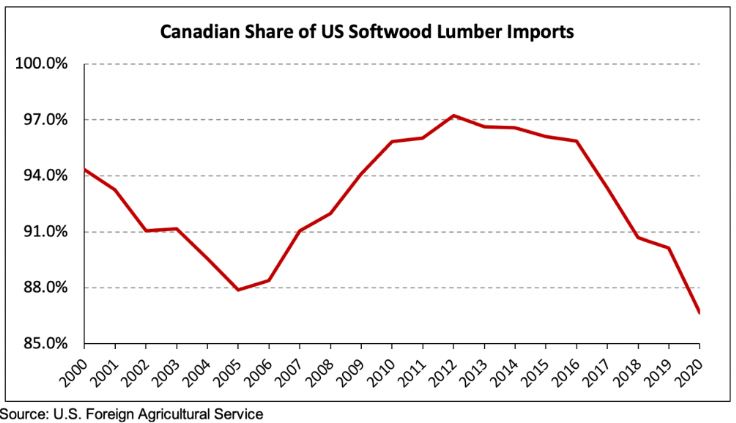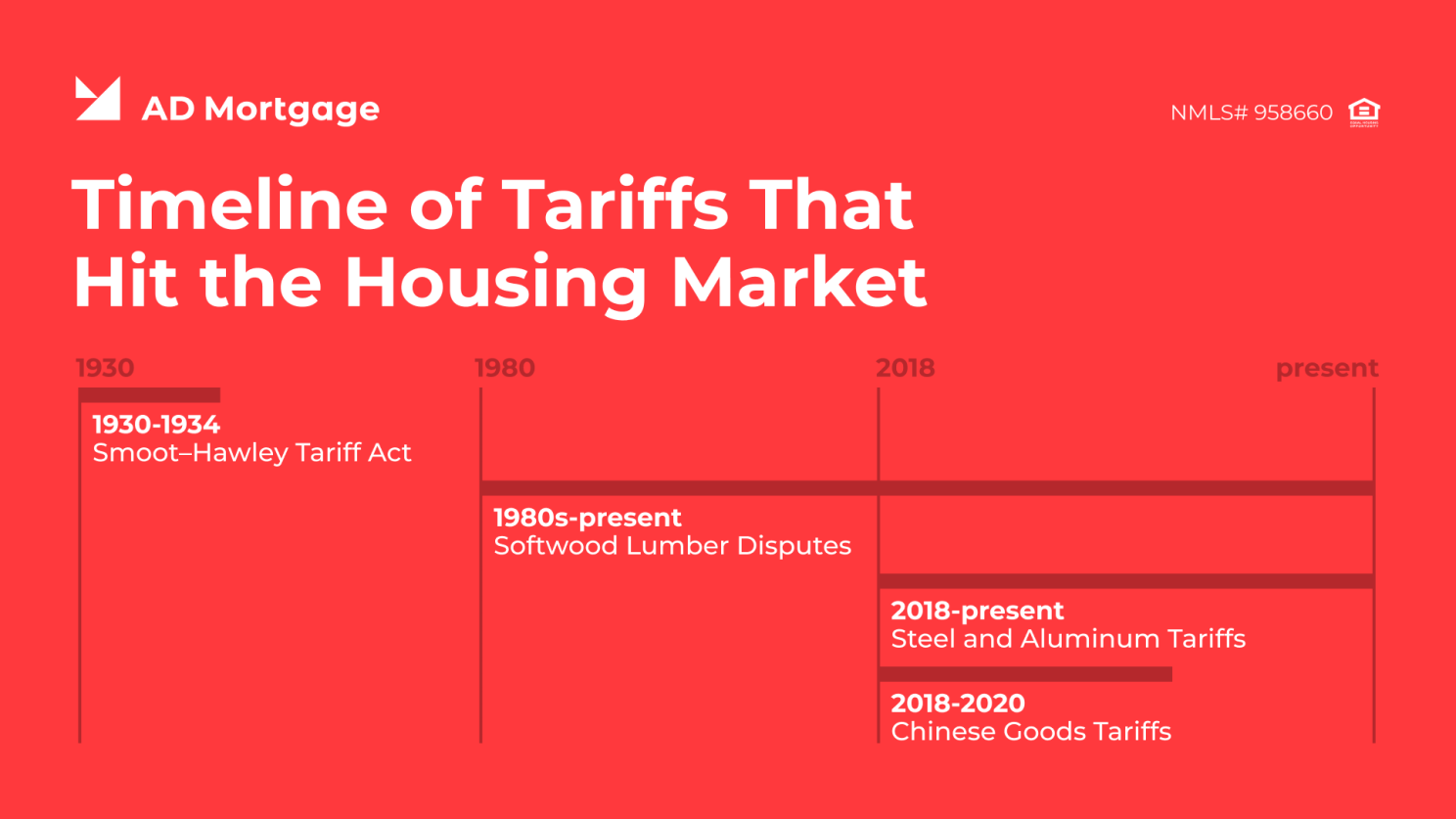President Donald Trump “thrives on unpredictability.” That’s what Lawrence Yun, chief economist for the National Association of REALTORS®, told the crowd at a recent economic summit in Chicago. “I think he purposely wants to be unpredictable,” Yun said. In the last 30 days alone, multiple tariffs by Trump have been announced, imposed, called off and hotly debated.
Now, the tariffs are beginning to take shape. And homebuilders are wary.
The tariffs
On Feb. 4, a 10% tariff on all goods coming in from China went into effect. Although Chinese imports are not closely associated with homebuilding, materials ranging from steel and aluminum to home appliances are sourced from China, according to the National Association of Home Builders (NAHB), and those materials were already subject to existing tariffs. On Feb. 10, Trump signed another executive order further increasing the tariffs on incoming steel and aluminum to 25%. That went into effect Feb. 12.
The real outcry, though, regards lumber. Roughly 30% of the lumber used in the United States last year was imported. Of that, more than 85% was imported from Canada. (That’s about 25% of lumber.) The same week that the Chinese tariffs went into effect, Trump signed an executive order for additional tariffs, this time targeting Canada and Mexico.
The tariff would charge 25% on imports from the border nations. However, these were delayed on Feb. 3, following tentative agreements with the leaders of both countries. These agreements centered on stopping the flow of drugs, particularly fentanyl. According to Canadian Prime Minister Justin Trudeau, the terms of the Canadian delay included a $1.3 billion “border plan” for Canada plus additional Canadian resources directed to the cause. Mexico, too, agreed to reinforce its northern border with 10,000 members of its National Guard.
In the meantime, the housing industry is sharing concerns.
The NAHB reacts — and builder confidence dwindles
Shortly after Trump’s inauguration, on Jan. 21, the NAHB applauded his day-one executive order that urged government agencies to take action to lower housing costs and expand supply. But NAHB chairman Carl Harris said raising tariffs will have the opposite effect.
“More than 70% of the imports of two essential materials that homebuilders rely on — softwood lumber and gypsum (used for drywall) — come from Canada and Mexico, respectively,” Harris said in a press release. “Tariffs on lumber and other building materials increase the cost of construction and discourage new development, and consumers end up paying for the tariffs in the form of higher home prices.”
As of January, the cost of the lumber package for a typical single-family home was about $30,000 — $13,000 more than in April 2020. Price spikes like these are especially burdensome for first-time buyers. A year ago, 36% of new homes nationwide were priced below $300,000; now, that share is just 21%. Agents and homebuilders alike are well aware of the ongoing affordability crisis.
When Trump reached an agreement to delay the proposed tariffs on Mexico and Canada, the NAHB commended the development. However, during the 30-day window that followed, homebuilder confidence slipped to its lowest level in five months. All three components of the NAHB/Wells Fargo Housing Market Index (HMI) — sales conditions, prospective buyer traffic and sales expectations — fell in February.
Notably, this was the largest one-month decline since the early months of the pandemic. It comes shortly after U.S. housing starts dropped 9.8% month over month in January, following a post-election builder confidence bump in December.
“With 32% of appliances and 30% of softwood lumber coming from international trade, uncertainty over the scale and scope of tariffs has builders further concerned about costs,” NAHB Chief Economist Robert Dietz said of the data.
A brief history of Canadian lumber exports
This recent U.S.-Canadian trade flare-up is the latest in a decadeslong dispute over lumber. That conflict started with stumpage fees. Stumpage fees are payments made to harvest timber from government-owned lands. In Canada, those fees are calculated based on metrics like timber volume, species and the price per unit.
When stumpage fees are below market rate, effectively, loggers have an advantage over international competitors. And, due to the nature of land ownership, Canada reaps the benefits. Beginning in the early 1980s, the United States has regularly imposed duties to combat this; those efforts can be seen through the level of imports, which has wavered over the years.
One such effort included increased duties, from 8.99% to 17.9%, on most Canadian softwood lumber producers in 2021, under President Joe Biden. But Trump’s 2025 executive order marks the most aggressive move yet.

via U.S. Foreign Agricultural Service via Global Wood
It comes at an already volatile time for Canadian lumber. In recent years, forests in Canada have suffered from severe wildfires, beetle outbreaks, warming temperatures and floods. In turn, Canada has enforced more sustainable logging practices, while giving more rights to First Nations (the Canadian equivalent of Native American tribes in the United States) to protect areas from logging.
Amid these environmental changes, five major Canadian lumber companies have recently increased investment in U.S. sawmills, mainly across the South. On Feb. 4, the day the tariff delay went into effect, Southeastern Timber Products announced an investment of $123.4 million to expand operations in Ackerman, Mississippi, creating up to 40 jobs.
When addressing the Chicago Association of REALTORS®, Yun commented on the push-and-pull between the North American neighbors. “Sometimes a tariff can help certain businesses, like lumber yards in Oregon or Maine, where you have to compete with Canadian lumber … Same thing for manufacturing companies in the Midwest states — Ohio, Illinois, Michigan — where tariffs may help with some of the manufacturing jobs.”
There could be some manufacturing revival, Yun said, but it will take time.
The effect on inflation
The tariffs are the brainchild of Peter Navarro, a counselor to Trump and longtime critic of China. As an economist, Navarro made a name for himself penning books like “The Coming China Wars” and “Death by China,” which focus on the country’s undermining of American manufacturing jobs. Navarro also makes the argument that China partakes in abusive trade policies.
China, not Mexico or Canada, has been the focus of most of Navarro’s press surrounding the tariff executive orders. In a recent conversation with The New York Times, Navarro reiterated the idea that “people are cheating us on trade” and that the tariffs will accomplish “more stable and resilient supply chains” which took a hit in the wake of the pandemic. Overall, he said, the aim is to increase national security and bring back American manufacturing.
When asked about the tariffs raising prices on goods, Navarro said, “Tariffs do not cause inflation when they’re imposed by the largest market in the world. That has been demonstrated by the fact that we aggressively imposed tariffs during the first term and had zero inflation as a result.”
During Trump’s first term, the administration did impose various protectionist trade policies. Targeted at specific industries, they did not greatly affect the economy overall. Per the Associated Press, data shows these tariffs never fully delivered factory jobs, nor did they provoke “the avalanche of inflation that critics feared.” Inflation was not “zero,” as Navarro suggested, but it averaged a rate of 2.1% up until the pandemic.
Now, amid the frenzy of tariff-induced inflation fears, the Federal Reserve Governor Christopher Waller said recent data supports keeping interest rates on hold — for now. If inflation behaves as it did in 2024, he said, policymakers may be cutting “at some point this year.”
Waller delivered these remarks in late February, before the 30-day tariff pause for Mexico and Canada was set to expire. “We need to act based on incoming data even when facing great uncertainty about the economic landscape,” he said. “Waiting for economic uncertainty to dissipate is a recipe for policy paralysis.”
He also reemphasized his previous position: that the new tariffs will “only modestly increase prices, and in a nonpersistent manner.”
Home prices, of course, may be another story.
